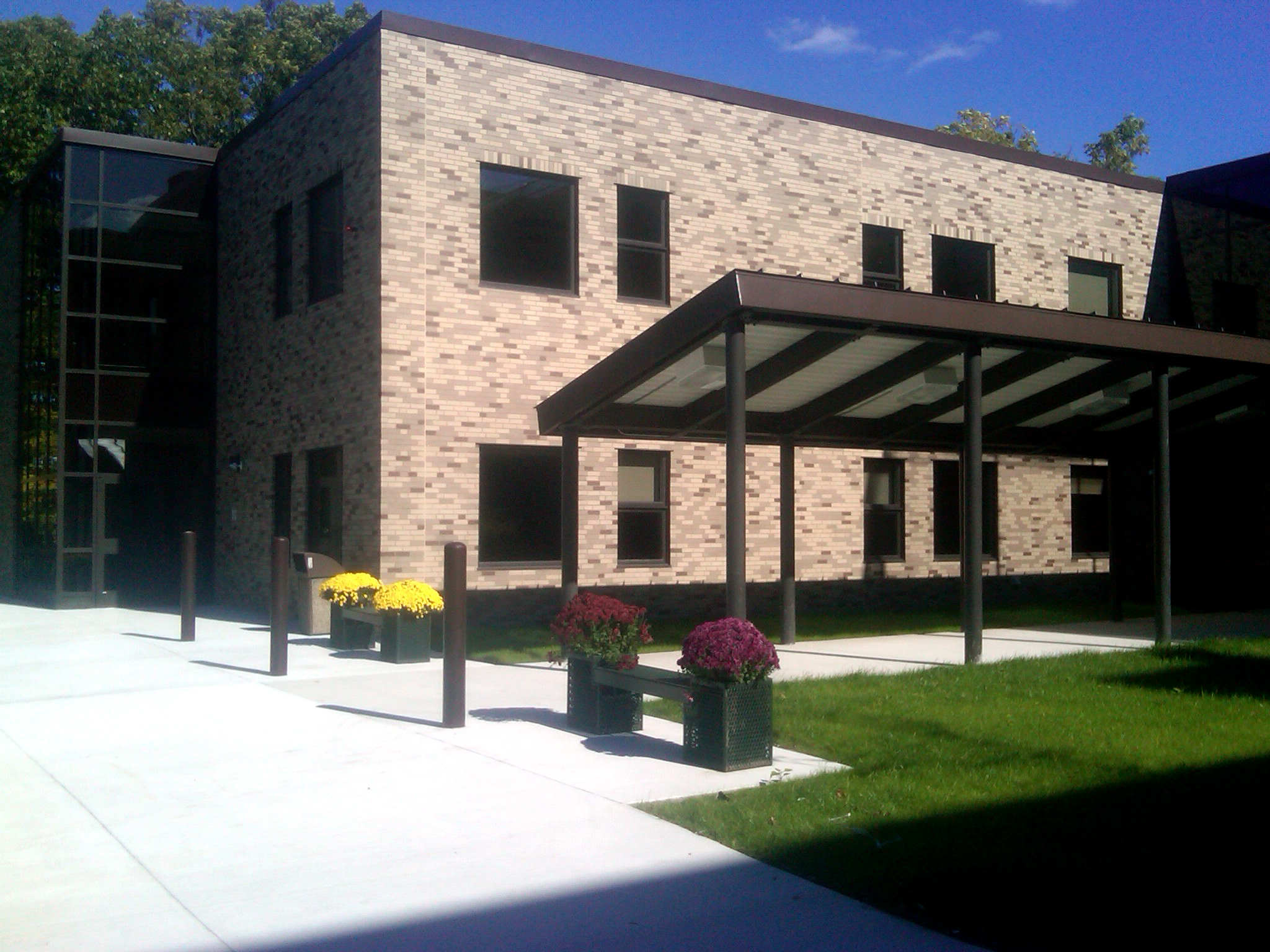The Franciscan Hospital for Children (FHFC) unveiled the new Kennedy Day School recently at a ribbon cutting ceremony. Built by Nauset Construction and designed by architectural firm Drummey Rosane Anderson, Inc., the 21,000 square foot addition was adjoined to the existing building, adding active classrooms and administrative space to the facility, which has served children with a variety of disabilities for over 60 years.
The $6.5 million fast-track, urban design-build projectwas completed in just over 16 months in a highly sensitive, occupied and operational medical environment.
Constructed to blend seamlessly with the existing structure, this new two-story, handicapped-friendly facility adjoins the hospital and features ten additional classrooms, a vocational skills center, a sensory-motor suite, culinary arts kitchens, an assistive technology lab and office space. From the specially-cushioned, sheet-vinyl flooring used to minimize injury in the case of a fall; to the lift track systems used to facilitate the movement of children throughout the space; new, innovative technologies allow these children to experience learning like any other child while tending to their special needs. Wide hallways, slip-resistant flooring, automatic doors, interior handrails and the addition of an oversized elevator provide for a safe and easy passage in and around the school and adjacent hospital. BD+C
Related Stories
| Aug 11, 2010
PBK, DLR Group among nation's largest K-12 school design firms, according to BD+C's Giants 300 report
A ranking of the Top 75 K-12 School Design Firms based on Building Design+Construction's 2009 Giants 300 survey. For more Giants 300 rankings, visit http://www.BDCnetwork.com/Giants
| Aug 11, 2010
Turner Building Cost Index dips nearly 4% in second quarter 2009
Turner Construction Company announced that the second quarter 2009 Turner Building Cost Index, which measures nonresidential building construction costs in the U.S., has decreased 3.35% from the first quarter 2009 and is 8.92% lower than its peak in the second quarter of 2008. The Turner Building Cost Index number for second quarter 2009 is 837.
| Aug 11, 2010
AGC unveils comprehensive plan to revive the construction industry
The Associated General Contractors of America unveiled a new plan today designed to revive the nation’s construction industry. The plan, “Build Now for the Future: A Blueprint for Economic Growth,” is designed to reverse predictions that construction activity will continue to shrink through 2010, crippling broader economic growth.
| Aug 11, 2010
New AIA report on embassies: integrate security and design excellence
The American Institute of Architects (AIA) released a new report to help the State Department design and build 21st Century embassies.
| Aug 11, 2010
Section Eight Design wins 2009 Open Architecture Challenge for classroom design
Victor, Idaho-based Section Eight Design beat out seven other finalists to win the 2009 Open Architecture Challenge: Classroom, spearheaded by the Open Architecture Network. Section Eight partnered with Teton Valley Community School (TVCS) in Victor to design the classroom of the future. Currently based out of a remodeled house, students at Teton Valley Community School are now one step closer to getting a real classroom.







